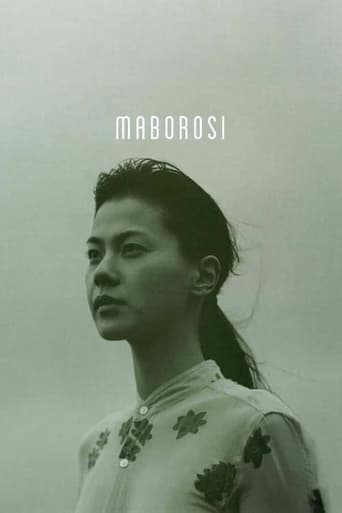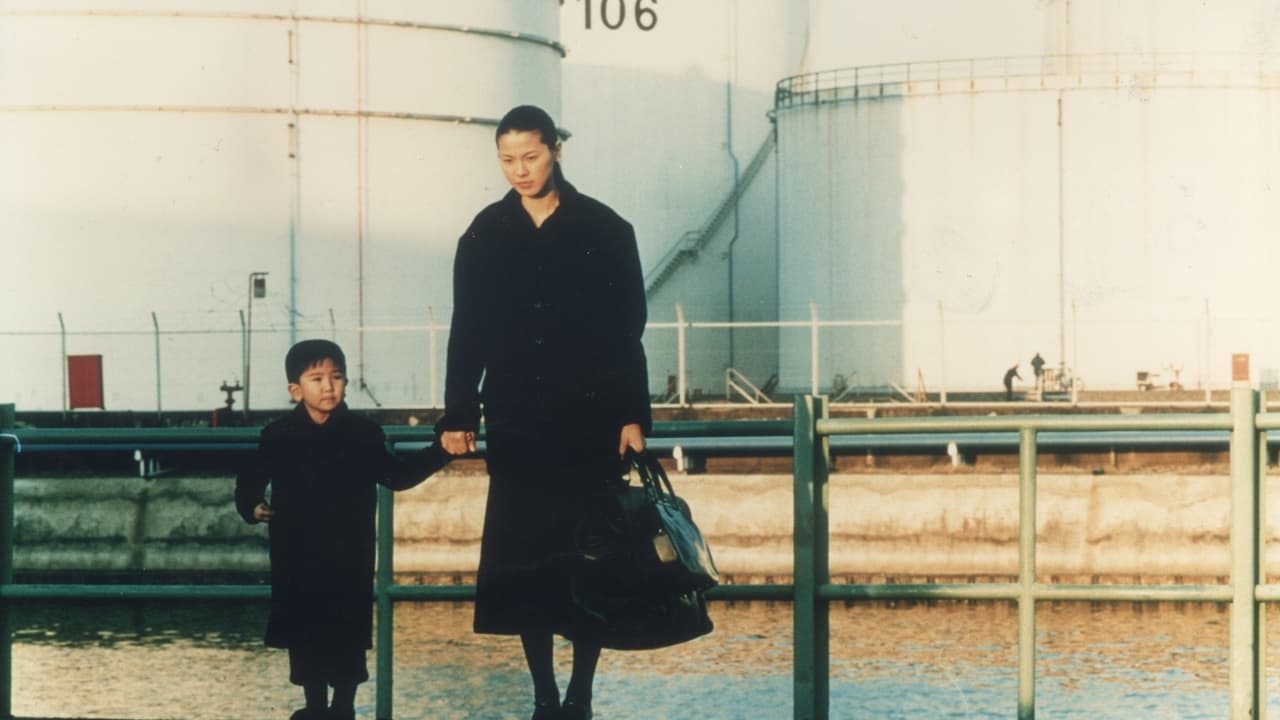pontram
I first liked the silence in this movie, but later I decided that it tells us about speechlessness, especially connected with the occurrence of sudden death. As an European, or simply feeling with Yumiko, I often said to her by myself "lets go and cry the hell out", but she didn't or it wasn't shown and I interpret this as Japanese behavior. She seems to be very smart and holds her feelings back. She adapts to the situation and won't allow any grief to take her over. But sometimes - I personally think - you should let you been overpowered by grief and sadness, so that the inner pressure can find a valve. Otherwise you could be damaged. When Yumiko visits her mother after a time, she looks like she came over. But she didn't. The barkeeper in the little coffee/tea shop tells her that he had seen her husband just before the incident, and he says that he looked and behaved as usual. This brings back the whole thing to Yumiko, and I felt a big power in this scene. I feared she would go back to their common apartment unprepared, and so she does, and so she is punished by the unmanaged remnants of her lost past.I liked the look of the movie, but I could not adore some painting-like stills or wonderful shots. Therefore I have seen too many movies in such a style, especially from Japan or Korea. And I don't give much about the style when I see such a movie, because a deeper going movie doesn't need style to reach me. I liked that the pictures weren't so beautiful, as in other Japanese productions. More or less, I had a good impression to see real places and follow real people in real life. Real life is often dull, gray or sad, especially when you lose your beloved partner. The reason is not that important, because what lasts is the partner's absence.Thus the causing of Yumikos first husbands' suicide is not important, and it is clear from the beginning that she never will find out. It is a constructed event that should lead us away from every disturbing explanation. The try to explain it on the end with some mystical light is a crutch, formed from helplessness. Instead, her new husband - how he lost his former wife stays in the dark - should have had a serious talk with her, about hers and his feelings, about life and death, about their inner movings. Isn't it strange that she only wants to speak with him when he is very drunken and not able to answer ? I identify the lack of discussion, the lack of review (which is fascinating for many viewers of the movie) as the real sadness, and the movie wants to tell about what happens if everybody keeps calm as required in Japan - nothing spectacular, but probably nothing enjoyable.We are helpless against fate - more modern: statistics - and helpless against the fragile illusion of a stable life and continuity, but not with our inner worlds. Being together means also sharing thoughts, not only relatives or day-work.
Paul Martin
Not having seen a Kore-eda film before, the style of this film took a while to get a handle on. It is a film about grieving, about loss. A young woman with a newly born child loses her husband, who has apparently committed suicide. There is little dialogue and little development of relationship dynamics with much of the gaps to be filled in by the imagination of the audience. The film had the style of a 1970's art film; there was a sense of timelessness about it.Kore-eda has an aesthetic that won't appeal to the casual film-goer. It is very slow-moving, and some of the indoor shots are quite dark. After a while, I got the sense that the viewer's attention is not meant to take in the whole screen, but rather parts of the screen such as the illuminated side of a woman's face in a dark room or the shapes of people reflected in water. Kore-eda seems fascinated with light and exploration of its use. Frames of illuminated subjects are contained within the larger screen frame. Light reflects of different surfaces, and at different times of the day. This is a film where you really need to 'get in the zone'.I liked the film. It rewards the patient viewer and the ending was very moving. A repeat viewing will enhance my appreciation and I look forward to seeing more of Kore-eda's films as part of a retrospectve at the Melbourne International Film Festival.
Alli Antar
I rarely watch the same movie more than once, but this one was so beautiful, I simply had to watch it again, paying full price to see it on the big screen each time. What I love the most about this film is the way that director Hirokazu Kore-Eda captures nature and humans as part of it, perhaps most eloquently portrayed by the scene in which rain drops on a window frame the face of the grief-stricken stoic-countenanced protagonist. The film begins with the story of a little girl's loss of her grandmother, and continues on with the story of the same little girl, now a young woman and the film's protagonist, whose life is again dramatically altered by the sudden death of her husband. Throughout the film, as a way of coping with the loss, she attempts to understand why he killed himself. My favorite scene in the film occurs near the end, when the protagonist watches a distant funeral procession by the sea. One has to wonder if it is Kore-eda's reflection of the woman's psyche - it is as if the funeral procession is a dream - and she is watching herself grieve from a distance? However, the organic nature of the scene seems to point to the fact that death, though often not explainable, is also a part of nature that humans must learn to accept. This film portrays the woman with exquisite sensitivity. I highly recommend this film.
CountZero313
Maborosi is an intriguing film to come to cold. Very few viewers will have this experience, but it is one I beseech you to bestow on others (you are already a lost cause by virtue of reading this review in this location). The deft hand Koreeda displays in directing actors, the core element of his later successes Nobody Knows and After Life, is seen here in the understated power of the performances from Asano, Esumi and Naito. Asano is especially well employed; given his superstar status, we expect him to hang around till the final reel. His early demise is jarring (remember, we are talking about a viewing of the film untainted by trailers, reviews or DVD case log-lines), not just because of who he is as a Japanese film icon, but because the husband-wife relationship is so finely drawn; two people who have clearly found their soul-mate and inhabit each other so completely. The suicide of Asano's character is unexpected but plausible, shocking but, with hindsight, foreshadowed.After this point Koreeda becomes self-indulgent, and the powerful momentum of the first act then seeps out miserably as obsessive framing and composition strong-arm out any concern for narrative drive or dramatic tension. The comparisons to Ozu that some reviewers have made are ingenuous; Ozu would hold on a shot beyond a time that most western editors are comfortable with - but there was always a strong narrative justification for doing so. Koreeda does it to imbibe this work with a Japanese aesthetic purely for its own sake, or perhaps because he is so damn proud of his composition. By way of example I offer up the funeral procession that takes place at the end. At one point the mourners trek single file across a beach. Shot at Golden Hour, in extreme long shot, the mourners enter frame right and exit frame left. It takes over two minutes for these minuscule figures to snake across the frame. The procession adds nothing to the story, it reveals nothing about the characters. Watching these people make their way across the beach is an exercise in tedium. It precedes the climactic moment when Esumi reveals to Naito that she is obsessing over the suicide of her first husband. The dialog here is an excellent piece of writing, but the dramatic tension is punctured by shooting in extreme long shot, Esumi and Naito pinpoint silhouettes on the beach delivering what should be the films chief cathartic moment. Inexpicably a fire burns on the beach, as though a funeral pyre has taken place (no such custom exists in this region of Japan, or any region of Japan). The heavy-handed symbolism, the decision to eschew with close-ups for the actors, the ill-disciplined editing - all these elements gang up to sink Maboroshi in a sea of pretentiousness. Interestingly, all three are dispensed with in later works, though After Life would benefit from a 20-minute trim. The most glaring missed beat is in the one scene of intimacy afforded to the newlyweds. Esumi and Naito sit against the bedroom wall in post-coital satiation. The scene is well-timed: just as we are wondering if the new couple are really getting along, we see that there is genuine intimacy between them. Except they both have their undies on. The sweat is still glistening on their bodies, they have ended up on the floor, and yet we are supposed to believe that they both reached over after the deed was done and pulled on their undies? Koreeda may as well have stuck a boom in the frame, it would have been a more subtle way of puncturing the suspension of disbelief. For a director who places so much stock by naturalistic composition and performances, it is a giggle-inducing miscalculation.As many have pointed out, Maboroshi is very pleasing on the eye, but even in an art gallery you pause before the best paintings for only so long before moving on. Koreeda needed to move us on at a much brisker pace than he does here. Esumi's dilemma, when it is finally revealed, comes much too late and is far too predictable. The distance between camera and actor ultimately put a distance between me and the story - I couldn't get close to these people. I had this niggling feeling I was watching a director who didn't trust his actors. This is worth watching only for film buffs intrigued by Koreeda's career path - but allow your finger to hover over the fast-forward button...


 AD
AD


